For Bhutan Ministry of Communications
Prepared by
International Telecommunication Union



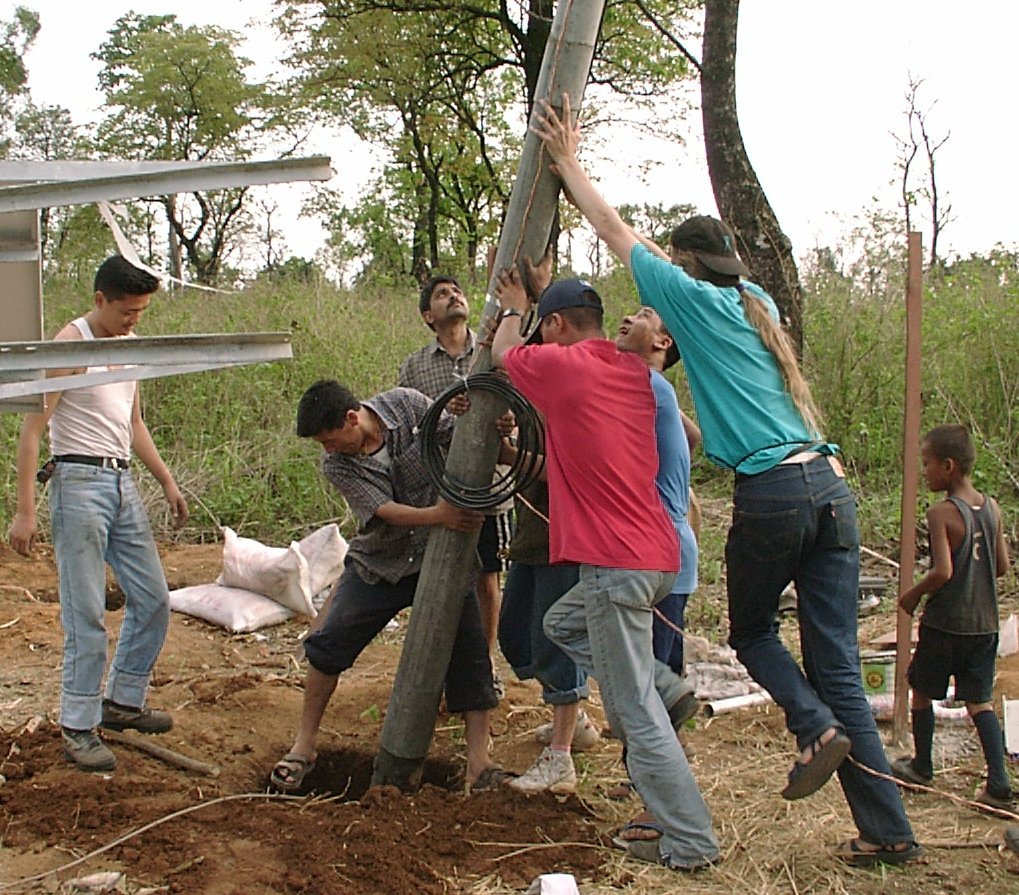
|
| Raising a Repeater in Rural Bhutan |
Photo by Tensin Tobgyl |
1.1 Voice Communications2 Goals
1.2 Data Communications
1.3 Combining Wireless and VoIP
2.1 Objectives3 Preliminary work
2.2 Expected outputs
4.1 General guidelines for site layout5 Equipment choices and constraints
4.2 Backbone
4.3 Last mile
4.4 Network layout
5.1 Radio6 Grounding and Lightning Protection
5.1.1 APs/Bridges5.2 Mounting hardware
5.1.2 Wireless Ethernet converter
5.1.3 Amplifiers
5.1.4 Antennas
5.3 Supplies
5.4 Linux Routers
5.5 VoIP
5.5.1 Billing5.6 Power
5.6.1 Commercial5.7 Timers
5.6.2 Solar
5.6.2.1 Sizing of solar systems
5.6.2.2 Batteries
5.8 Weather proof enclosures
6.1 Further recommendations for lightning protection7 Shipping Considerations
8.1 Timers9 Site preparation
8.2 Repeater boxes
9.1 Installation10 Trouble Shooting
10.1 Network11 VoIP equipment installation and configuration
10.1.1 Problems with routing10.2 Radio
10.1.2 Bridging vs. Routing
10.2.1 Mutual Interference
10.2.2 Radio System Monitoring
13.1 Radio14 Recommendations
13.2 Flytech
13.3 Additional training
14.1 Radio
14.1.1 Backbone cost trade off study
14.1.2 Repeaters and CPEs
14.1.3 Monitoring
14.2 VoIP15 Conclusion
14.3 Billing
14.4 Software
14.4.1 General14.5 Internet access test sites
14.4.2 Specific features that are important in a wireless system
14.4.3 Specific features that are important in a VoIP system
14.5.1 Solar powered sites14.6 Lightning protection
14.7 Mounting
14.8 Local construction
14.9 Transport
14.10 Further research
15.1 Concluding remarks by local counterpart
A.1 LVD CircuitsR References
A.2 Battery charging and desulfation
A.3 Site Photos
A.4 List of Figures
A.5 List of Tables
A.6 List of Acronyms
R.1 General
R.2 Batteries
R.3 Solar
R.4 Wireless
R.5 Lightning
R.6 Timers
R.7 SBCs
R.8 Other Wireless Projects

|
| Fig. 1 Limukha Area Diagram. Source: Tensin Tobgyl, ITU, "Bhutan: Wireless IP based Rural Access Pilot Project" [2.1] |
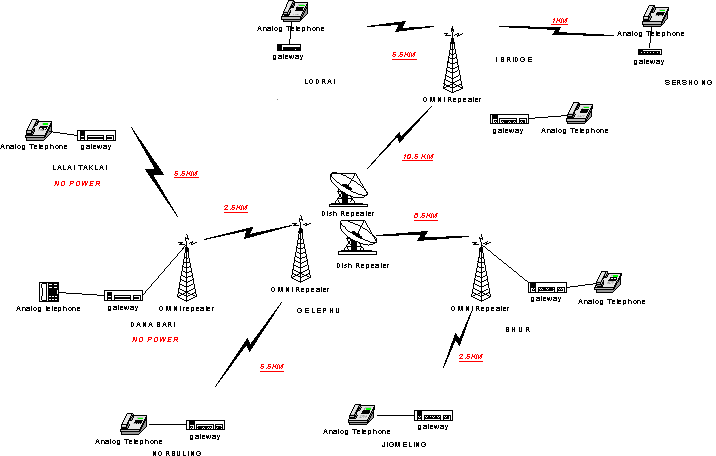
|
| Fig. 2 Gelephu Area Diagram Source: Tensin Tobgyl, ITU, "Bhutan: Wireless IP based Rural Access Pilot Project" [2.1] |
| A quick comparison of existing and proposed 802 wireless
standards [18] Table 1 |
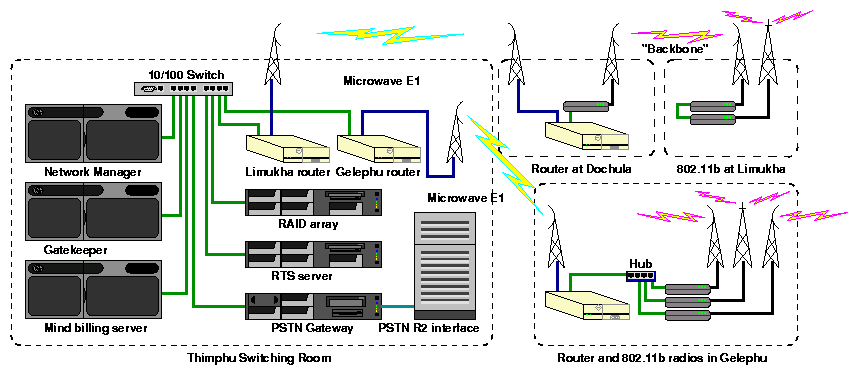
|
| Fig. 3 Original network diagram for the NOC and outward
links |

|

|
| a) First rack |
b) Second rack |
| Fig. 4 NOC in the Thimphu switching
room | |

|

|
| a) Cracking when bolt is
tightened |
b) Hard to find proper sizes in the
field |
| Fig. 5 Problems with expansion bolts | |
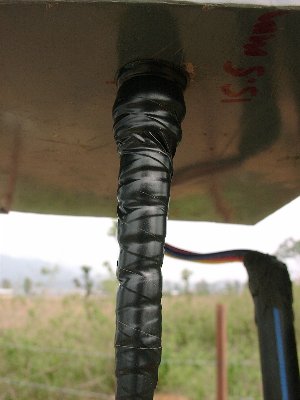
|

|

|
| a) Example of coax entering box |
b) Electrical tape being applied over
rubber tape Fig. 6 Proper taping of connections |
c) Example of taped Amp
connections |
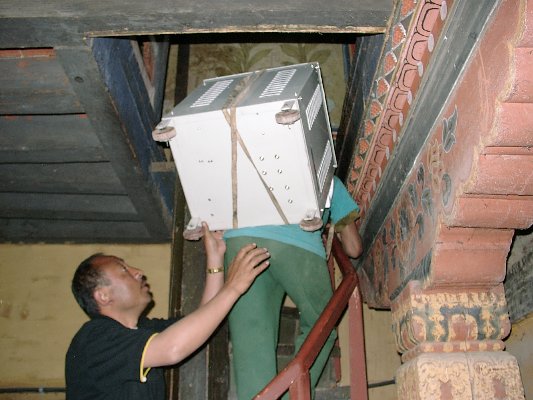
|
| Fig. 7 The commercial charger was a bit larger than it
needed to be |
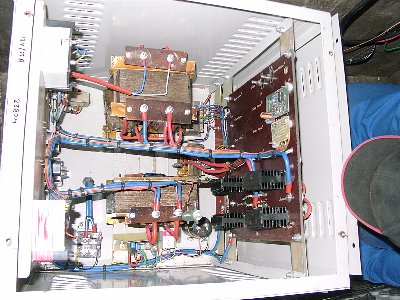
|
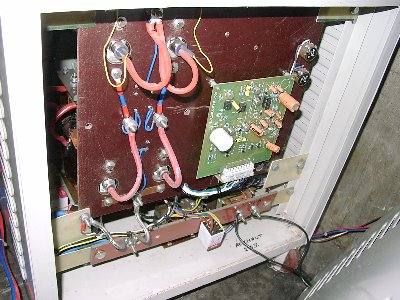
|
| a) Top of Charger |
b) Back of Charger |

|
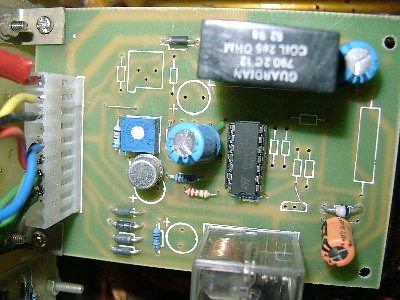
|
| c) Right side of Charger |
d) Closeup of LVD board showing
adjustment |
| Fig. 8 Inside the commercial charger | |
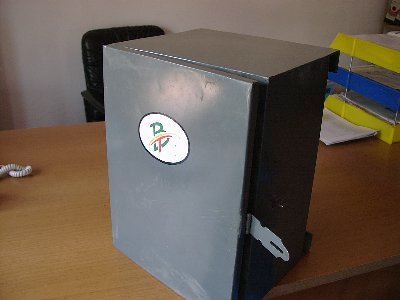
|
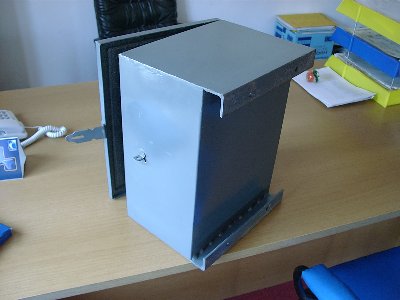
|
| a) Weather tight box made in
Bhutan |
b) Slight problem with
mounting |
| Fig. 9 Weather tight box | |
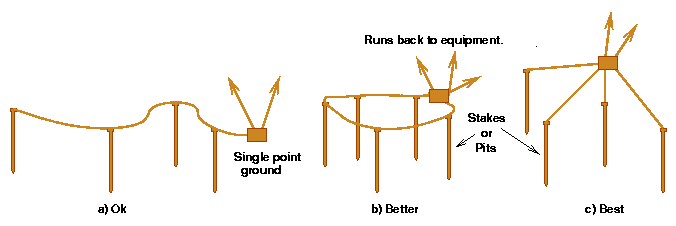
|
| Fig. 10 Different grounding
examples |
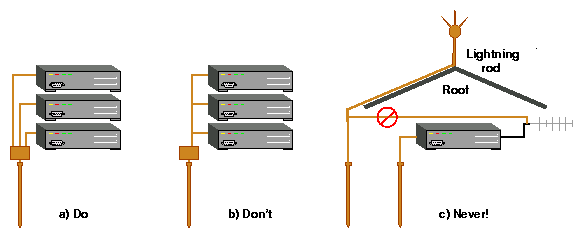
|
| Fig. 11 Equipment grounding
examples |
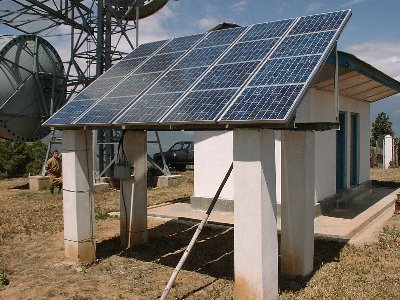
|
| a) Solar Panel at Limukha with static dissipating
points |

|
| b) Closeup of top of panel Fig. 12 |

|

|
| a) Chargers, Batteries, and hardware from
India |
b) Repeater Boxes made in
Bhutan |
| Fig. 13 Example shipments | |
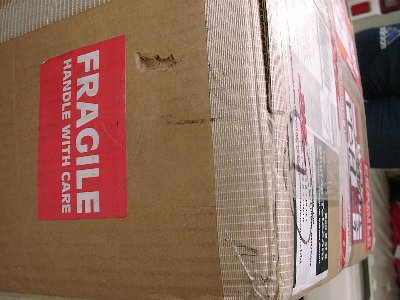
|

|
| Fig. 14 Examples of minor rough handling by
DHL | |
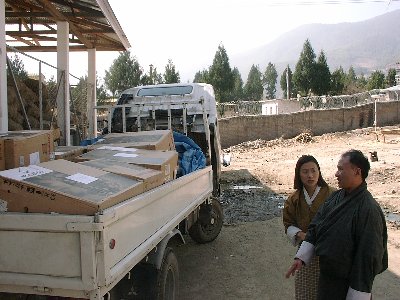
|
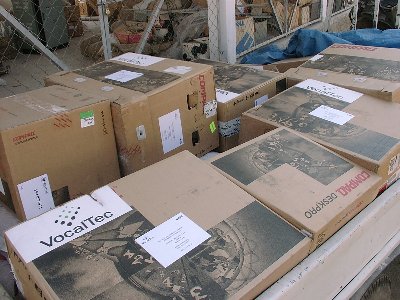
|
| Fig. 15 The VocalTec shipment came in via
Phuntsholing | |
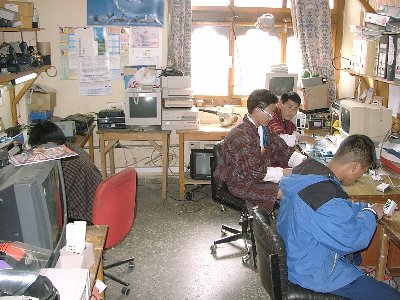
|

|
| a) |
b) |
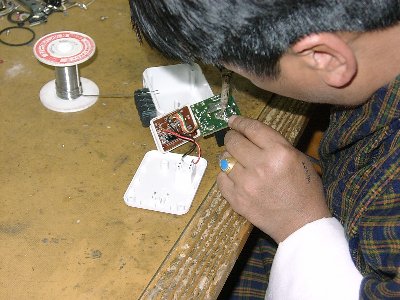
|

|
| c) |
d) |
| Fig. 16 Converting the
timers | |
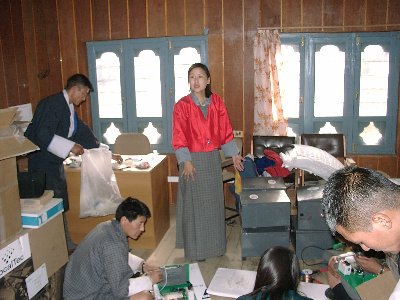
|
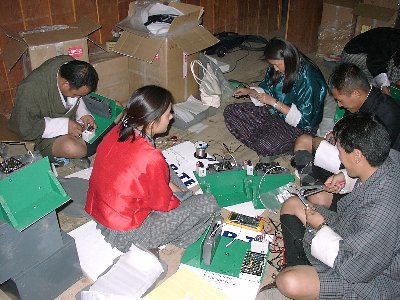
|
| a) Directing the workflow |
b) Building the repeater
boxes |
| Fig. 17 | |
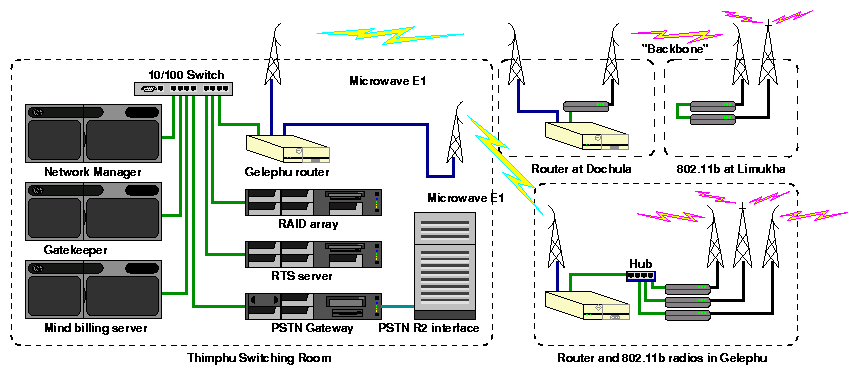 |
| Fig. 18 Final network diagram for the NOC and outward
links |
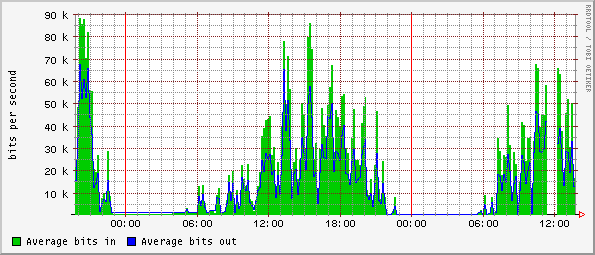
|
| a) Throughput for the Dochula dish |
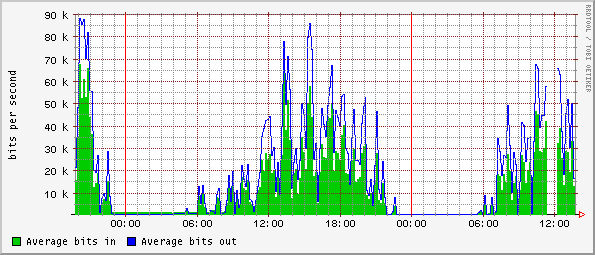 |
| b) Throughput for the Limukha dish Fig. 19 Backbone throughput graphs |
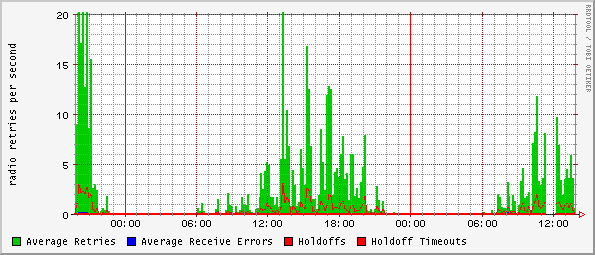
|
| a) Dochula Dish RF errors |

|
| b) Limukha Dish RF errors |
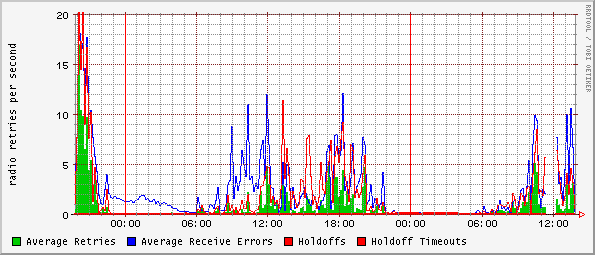
|
| c) Limukha Omni RF errors Fig. 20 Sample RF error rate graphs |

|
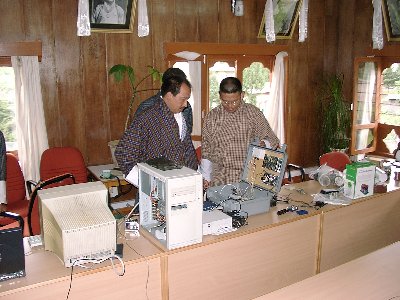
|
| Fig. 21 R&D Results
Demonstration | |

|
| Fig. A.1.1 Here is one that originally was half of a solar charger |

|
| Fig. A.1.2 Burton Lang's, (VE2BMQ) LVD Circuit |

|
| Fig. A.1.3 The Consultants LVD
Circuit |
Here is a more detailed article on these new charging algorithms [7.1].[...]
The current interrupt charging algorithm is a simple approach for recharging lead-acid batteries that extends the cycle life of the batteries by 300 to 400 percent. Lead-acid batteries used in electric vehicles have, until now, lasted only about 150 to 200 deep discharge cycles, primarily because the batteries have been charged using a constant current and voltage.In contrast, NREL and its partners, Recombination Technologies and Optima Batteries, devised a new and more efficient way to charge batteries. Their method involves applying a current to the battery for five seconds to overcharge the battery slightly, then interrupting the current for five seconds. This allows the battery to cool and avoid going into the oxygen recombination cycle, which leads to early failure of the negative battery plate due to oxidation of sulfuric acid into sulfate.
"Our idea was to increase the cycle life of lead acid batteries to have less waste in our landfills," said Mechanical Design Engineer Matt Keyser. "By increasing the cycle life, consumers will use fewer batteries over time."
Visit NREL online at http://www.nrel.gov/.
[...]

|
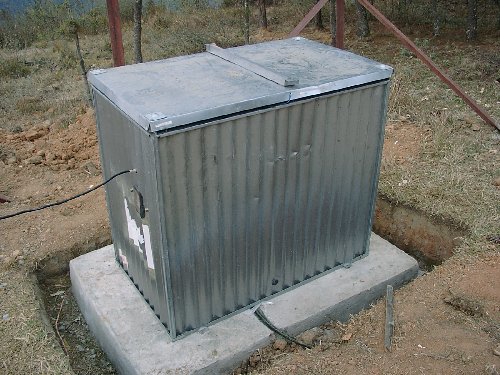
|
| a) Talo repeater site |
b) Commercial power housing |
| Fig. A.3.1.1 | |

|
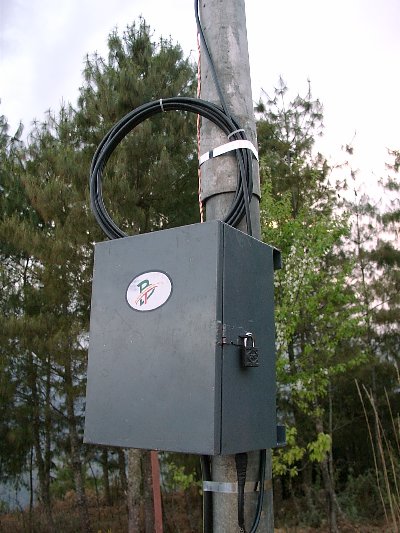
|
| a) Antenna |
b) Box |
| Fig. A.3.1.2 | |
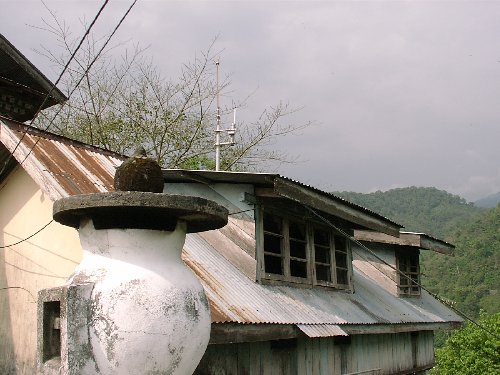
|
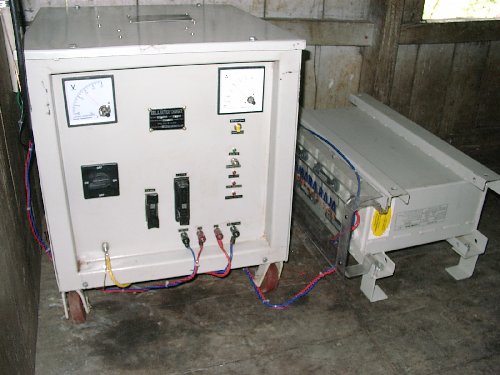
|
| a) Repeater shack |
b) Commercial power battery charger and
battery |
| Fig. A.3.2.1 | |

|
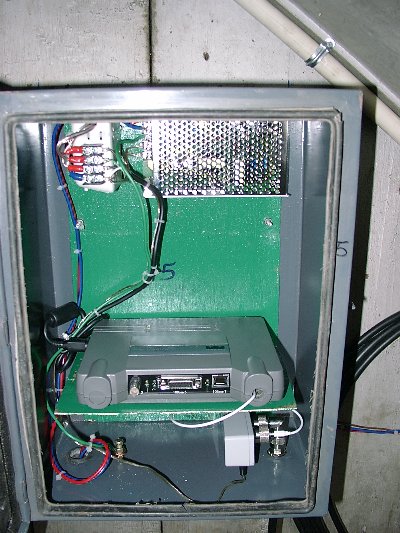
|
| a) Inside shack |
b) Inside box |
| Fig. A.3.2.2 | |

|

|
| a) Chusegang site showing earthing
pits |
b) Raising the repeater |
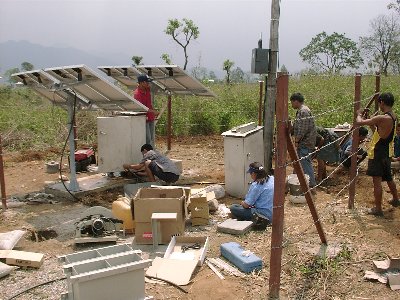
|

|
| c) Installing solar and
fencing |
d) Nearly finished
site |
| Fig.
A.3.3.1 | |

|
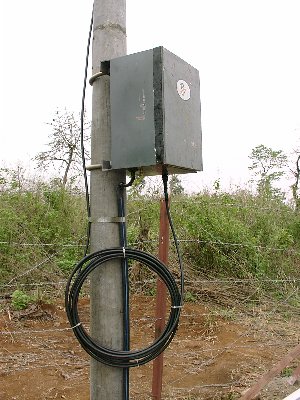
|
| a) Antenna |
b) Repeater box |
| Fig. A.3.3.2 | |

|

| |
| a) 360 Ah battery bank |
b) Trace C40 Charger and
LVD | |
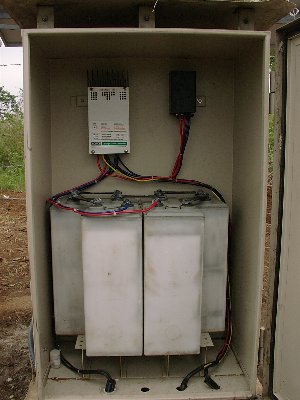
| ||
| c) Box Fig. A.3.3.3 | ||
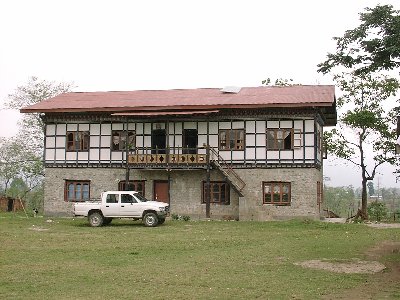
|
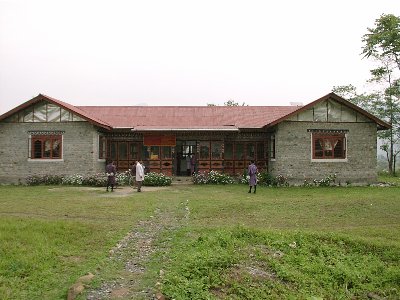
|
| a) Dwelling and forestry office with
CPE |
b) Nearby Basic Health Unit
(BHU) |
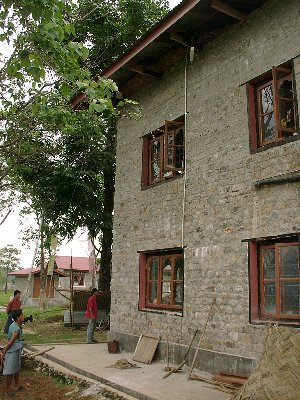
|

|
| c) Back side with Antenna and
coax |
d) Closeup of Antenna |
| Fig. A.3.4.1 | |

|

|
| a) Fastening equipment to plaster walls is
difficult |
b) Completed CPE |
| Fig. A.3.4.2 | |
 |
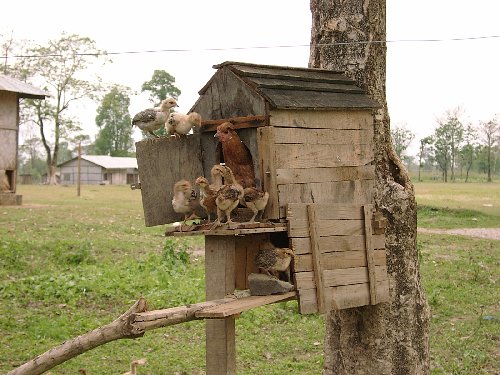
|
| Fig. A.3.4.3 Some of the families served in
this community are quite large! | |

|

|
| a) Limukha tower |
b) The dish was originally mounted at the
top |
| Fig.
A.3.5.1 | |
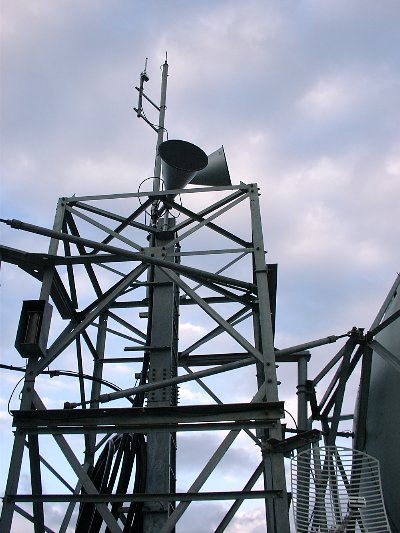
|

|
| Fig. A3.5.2 Then the dish was moved down to
provide more separation between it and the
omni. | |

|
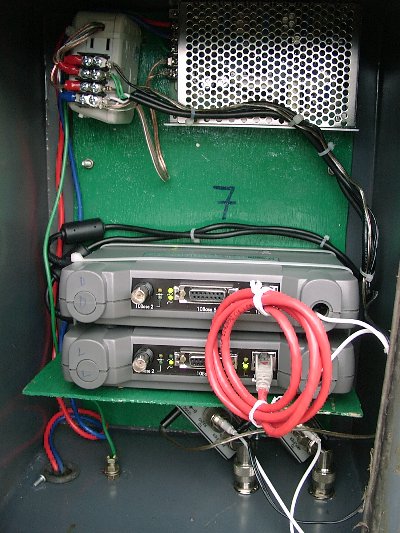
|
| a) Dish visible in center of
tower |
b) Repeater box showing two bridges with
crossover cable |
| Fig.
A.3.5.3 | |

|
| Fig. A.3.6.1 |

|

|
| a) Corner of School building |
b) Roof line |
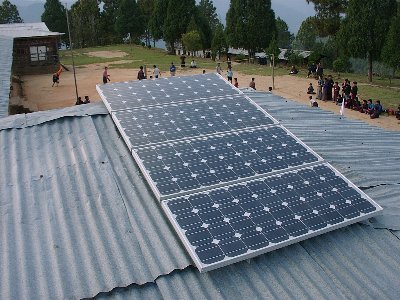
|
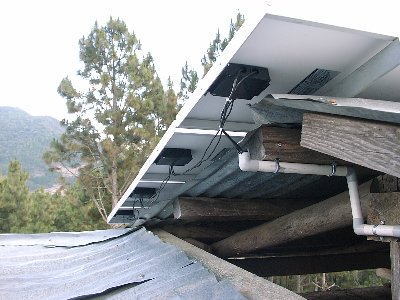
|
| c) Solar panels |
d) From below |
| Fig. A.3.6.2 | |
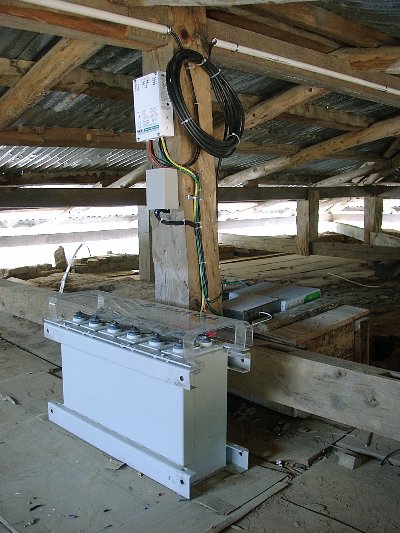
|
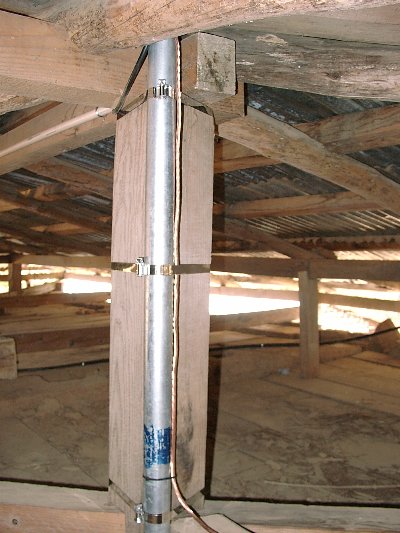
|
| a) CPE under roof |
b) Antenna mast fastening |
| Fig. A.3.6.3 | |

|
 |
| a) Thinlaygang school |
b) A brand new classroom |
| Fig.
A.3.7.1 | |

|

|
| a) Building the ladder out of bamboo
poles |
b) The ladder in place and
braced |
| Fig.
A.3.7.2 | |
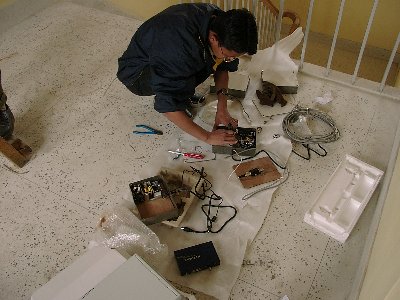
|
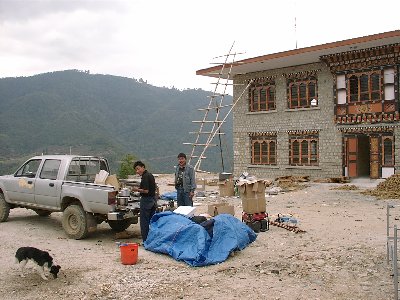
|
| a) Building the power supply, and EC
box |
b) Lunch time! |
| Fig. A.3.7.3 | |
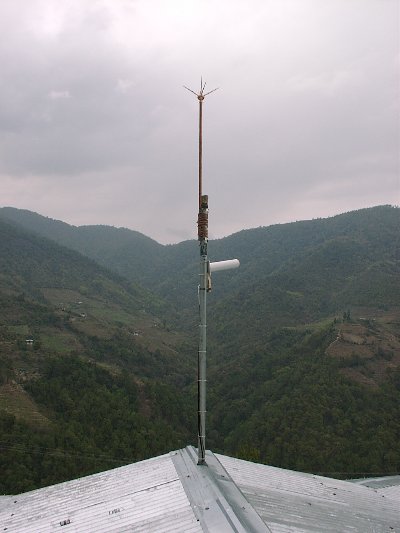
|

|
| a) Antenna pointing back to Talo
repeater |
b) Closeup |
| Fig.
A.3.7.4 | |
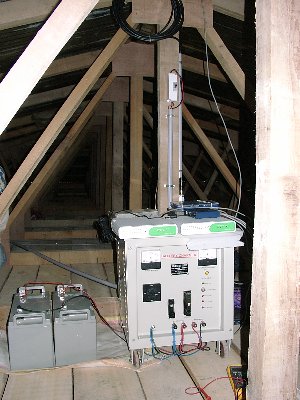
|

|
| a) first CPE setup |
b) CPE with Soekris SBC |
| Fig. A.3.7.5 | |
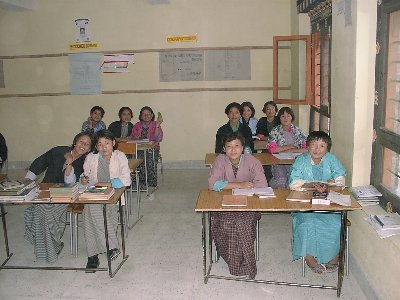
|

|
| a) One of many classes hoping for Internet
access |
b) The Principle with his hub and network
cable |
| Fig.
A.3.7.6 | |
1 Limukha Area Diagram
2 Gelephu Area Diagram
3 Original network diagram for the NOC
4 NOC in the Thimphu switching room
5 Problems with expansion bolts
6 Proper taping of connections
7 The commercial charger was a bit larger than it needed to be
8 Inside the commercial charger
9 Weather tight box
10 Different grounding examples
11 Equipment grounding examples
12 Solar Panel at Limukha with static dissipating points
13 Example shipments
14 Examples of minor rough handling by DHL
15 The VocalTec shipment came in via Phuntsholing
16 Converting the timers
17 Building the repeater boxes
18 Final network diagram for the NOC
19 Backbone throughput graphs
20 Sample RF error rate graphs
21 R&D Results Demonstration
A.1.1 Half of a solar charger
A.1.2 Burton Lang's, (VE2BMQ) LVD Circuit
A.1.3 The Consultants LVD Circuit
1 A quick comparison of existing and proposed 802 wireless standards
2 Calculations for solar system size
| AP |
Access Point |
| BHU |
Basic Health Unit |
| BT |
Bhutan Telecom |
| CDR |
Call Data Record |
| CF |
Compact Flash |
| CIR |
Committed Information Rate |
| CPE |
Customer Premise Equipment |
| CSN |
Circuit Switched Network |
| dBi |
Decibels relative to an Isotropic radiator |
| DIT |
Department of Information Technology (in Bhutan) |
| DRMASS |
Digital Radio Multiple Access Subscriber System |
| EIRP |
Equivalent Isotropically Radiated Power |
| FCC |
Federal Communications Commission (in the US) |
| GK |
Gate Keeper |
| GW |
Gateway |
| ITSP |
Internet Telephony Service Provider |
| LAN |
Local Area Network |
| LCR |
Least Cost Routing |
| LOS |
Line Of Sight |
| LVD |
Low Voltage Disconnect |
| MAN |
Metropolitan Area Network |
| MOV |
Metal Oxide Varistor |
| MPPT |
Maximum Power Point Tracker |
| MTBF |
Mean Time Between Failure |
| NIC |
Network Interface Card |
| NLOS |
Near Line Of Sight |
| NOC |
Network Operations Center |
| PCI |
Peripheral Component Interconnect |
| PCMCIA |
Personal Computer Memory Card International
Association |
| PoE |
Power over Ethernet |
| POTS |
Plain Old Telephone Service |
| PSN |
Packet Switched Network |
| PSTN |
Public Switched Telephone Network |
| SBC |
Single Board Computer |
| SNMP |
Simple Network Management Protocol |
| SNR |
Signal to Noise Ratio |
| SOC |
State Of Charge |
| STP |
Spanning Tree Protocol |
| TCO |
Total Cost of Ownership |
| TOF |
Time Of Flight |
| UTP |
Unshielded Twisted Pair (Cat 5) |
| VRLA |
Valve Regulated Lead Acid (battery) |
| WAN |
Wide Area Network |
| WLL |
Wireless Local Loop |
Trace C12 http://www.traceengineering.com/products/charge_controller/index.html[15] A short list of standalone LVDs
SCI 30 AMP REGULATOR (SC1/30) http://www.solarexpert.com/Chargecontrol/SCI.html
PS30 http://www.e-marine-inc.com/products/charge_controllers/photostar.html
Lyncom N35 35 amp solar charge controller with LVD http://www.solar-electric.com/lynn3535amps.html
Prostar 30 http://www.solarpowerstore.com/canada/controllers.htm
Steca 30 Omega http://www.cetsolar.com/steca.htm
Model 8000124, $145, http://www.buytruckstuff.com/product.asp?selcategory=17&p_gpID=49
Model LVD 12-30, $133, http://www.marconi.com/media/6-11.pdf
PR/SS-LVD8/16-12AD, $63.05, http://www.solardepot.com/photovoltaic_pvcatalog/solar_electricity_catlvd.html
Cir-Kits SPC2 six amp solar charge controller with LVD kit, $55, http://www.cirkits.com/solar/spc2.html
LVD10 and LVD20 http://www.xenotronix.com/products/lvdc.htm
Intra LVD http://www.intra-tech.com/products/prodlow.html
Surepower LVD 130512 http://www.surepower.com/pdfs/lvd.pdf